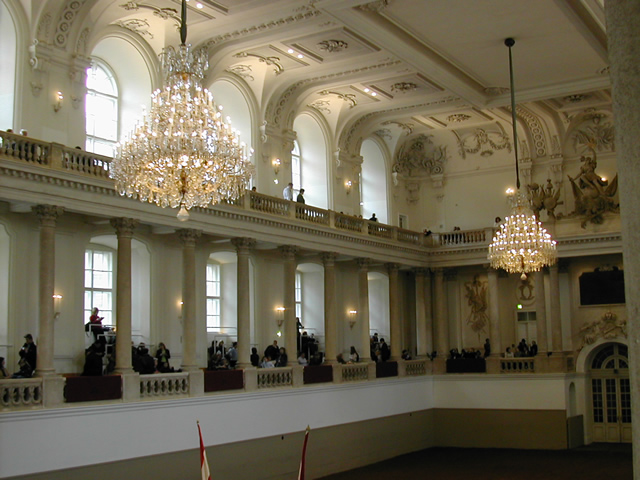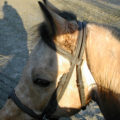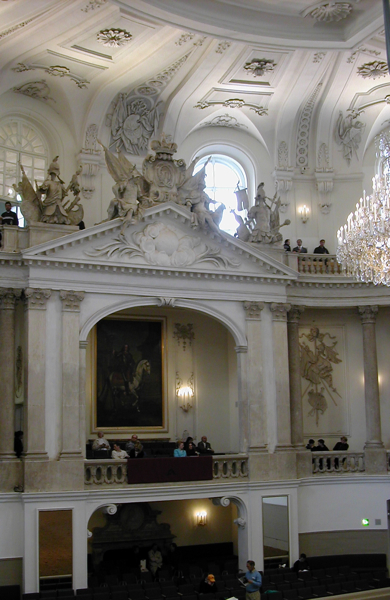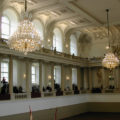For Easter vacation we went to Vienna. There’s so much to do there that we barely got started; we’ll definitely have to go again.
The highlight of the trip, fulfilling a 30-year dream for me, was seeing the Lipizzaner stallions perform at the Spanische Hofreitschule. The event fully lived up to my hopes and expectations.
For my non-horsey readers: the Lipizzaners are the famous “dancing” white stallions who perform highly skilled and specialized dressage, in a tradition dating back 400 years.
They generally perform only twice a week, and there aren’t very many places for spectators, so you need to book well in advance – I wandered onto their website in mid-February and snapped up the last three tickets for the Saturday before Easter. The site is confusing; had I realized at the time how much those seats were going to cost, I might not have booked. But then the email confirmation arrived saying that the reservation could not be canceled, so we decided, what the hell – once in a lifetime, it’s bound to be worth it. And it was.
It’s a beautiful show of acrobatics and athletics, but it’s also about the relationship between man and horse. At the Lipizzaner museum and in the show program notes, we learned that riders begin at age 16, first learning to ride on an experienced stallion. After four years or so, when and if he’s judged ready, a rider is given his own young horse to train, which will take another four years. Later still, he will be expected to train other riders and help them train their horses; part of the selection process includes an assessment of the rider’s ability to pass on what he knows. Throughout his career, a rider will be responsible for the same small group of horses ideally, a horse is always ridden by the same rider, for up to 20 years.
So what you see is the result of a long-term partnership in which man and horse know each other very well. So well that the horses appear to perform their magic entirely of their own will the rider’s signals are so subtle that you don’t see him move from his ramrod-straight position in the saddle. The most we observed was a twitch of the heel here and there.
The riders also keep very straight faces, almost never displaying any emotion or even a well-deserved sense of accomplishment. At the end of each exercise, the only sign that anyone’s been working hard (and they have been!) is that the horses are foaming at the mouth and the riders are red in the face.
There was one exception to the poker-face rule, one of the senior riders, who didn’t quite smile, but nonetheless looked kind. And Ross swears that, when his young horse was acting up (slightly) during the show, she saw him giggle. We agreed that he looks like someone you’d want to take riding lessons with.
Unfortunately, that’s a dream that Ross could never live, without a revolution: the Hofreitschule is totally a guy thing. The horses are all stallions, and the riders all men. As far as we could discover, there has never been a female rider. I’ll have to dig a little deeper and see whether the notion has ever crossed anyone’s mind.*
* Aug, 2006 – A reader wrote to point me to an article showing that women do indeed ride Lipizzaners – but in South Africa, not Vienna.
photo above: the performance hall, rightly called the world’s most beautiful manege






